How to Use Personalized Product Recommendations [Best Practices & Examples]
Justina Bakutyte
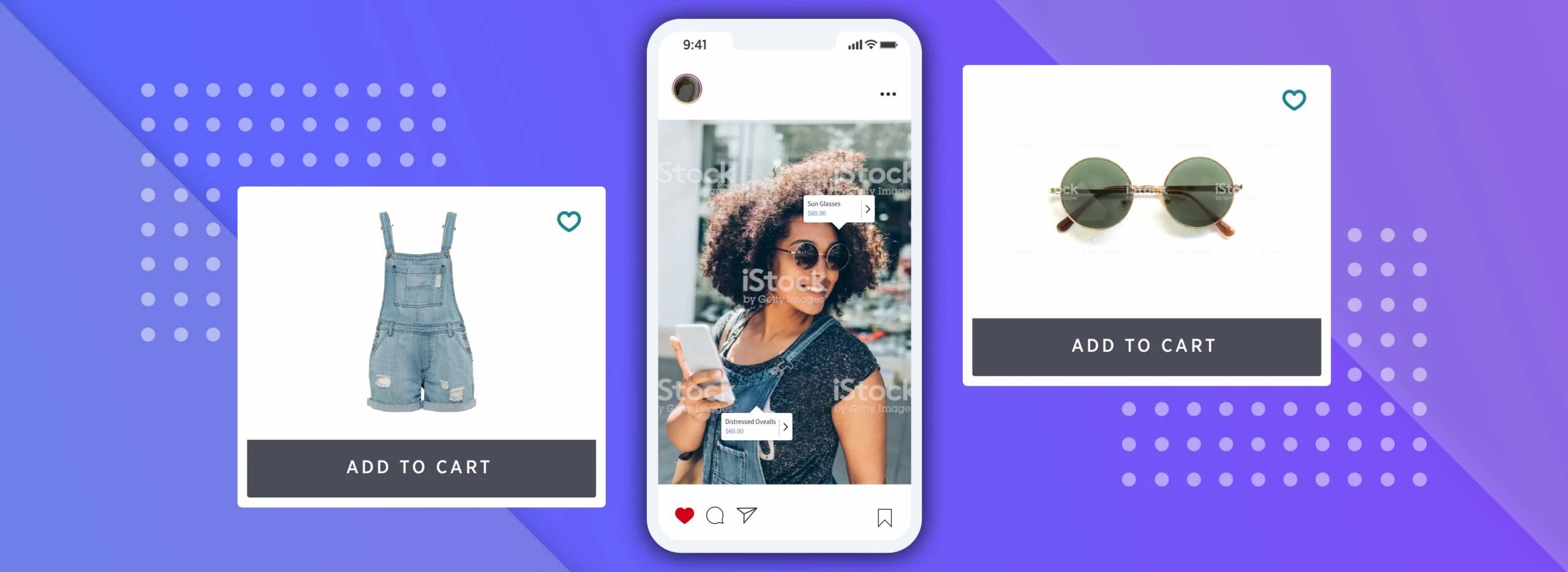
Picture the scene: you’re in your favorite clothing store, trying on a great new pair of jeans. Suddenly, the associate you’re with clicks their fingers and in a eureka moment, declares they know a top that would work perfectly with those jeans.
Or perhaps you’ve visited a tech store and bought your new tablet up to the checkout, but before scanning your item the clerk pauses and asks whether you’ve seen the brand new screen protector that’s just perfect for your tablet.
If either of these scenarios sounds familiar to you, you’ve experienced personalized product recommendations.
Of course, in the world of ecommerce, having real sales associates around to do this isn’t possible. Instead, online retailers need to use technology and data to understand their users and recommend products based on their interests and behavior from the very first time they visit their homepage.
Done right, these personalized product recommendations are extremely effective. Montetate, 75.5% of businesses are getting positive ROI from personalization, with every industry responding in the affirmative at 70% or above.
With ecommerce on the rise and 90% of shoppers attesting to being willing to share their behavioral data if their shopping experience is made cheaper or more convenient, there’s never been a better time to implement more personalization into your online store.
Let’s explore why personalized product recommendations should be one of your first priorities.
What are Personalized Product Recommendations?
Personalized product recommendations are when a site shows a selection of product recommendations that’s unique to the individual visitor, based on their behaviors and profile. This is almost always based on a machine learning algorithm.
What’s important to remember is that not all forms of product recommendation are personalized. How do you know if they’re personalized or not? The question you should ask is whether you’d be seeing the same recommendation as the person next to you.
Here are a few ideas of what constitutes ‘personalized’ product recommendations:
Recommending products based on the user’s browsing or purchase history. Amazon is one of the gold standards for this, using historical data to serve unique related products to each visitor:

Recommendations based on customer location or profile. A good example of this is using data on the customer’s location and making product recommendations based on the current weather conditions. One could just as easily use data on the visitor’s age or gender to change the recommendations.
Using product affinities to recommend products. The best example of this is showing recommendations based on user behavior and what other, similar users have done. Again, Amazon is a great example of this, showing a set of recommendations on a product detail page (PDP) to take the user on the next step of their journey:

So if these are ‘personalized’ product recommendations, then what are ‘unpersonalized’ ones? Here are a couple of examples.
Showing social proof to indicate how popular a product is. This is an important tactic, but it’s generally the same, regardless of what the user has been doing.
Showing recommendations based on ‘business rules’. For example, indicating which items are low in stock or top sellers is a good tactic, but this is static and won’t change based on the visitor.
Now we know the true meaning of personalized product recommendations, let’s unpack why they’re worthwhile.
Why Use Personalized Product Recommendations In Ecommerce?
Put simply, SmartHQ reports that they ‘found strong correlations between customers who see unique product suggestions and recommendations who not only stayed on brand’s websites longer, but they also compared prices on Amazon less, if at all.
Around 84% of consumers rate being valued as a person and not as a number as very important to winning their business.
Relevant recommendations are also important to us because of their convenience. Rather than having to search for something else we might like around our original purchase, we automatically get signposted to something, saving us valuable time. Most ecommerce CMS systems should also allow you to automate most of this process fairly quickly.
In case you’re not convinced, here are some more reasons to use personalized product recommendations:
1. Decrease shopping cart abandonment rate.
In ecommerce, cart abandonment rate is one of the most important metrics. Showing personalized recommendations on the cart page can improve cart abandonment rates by 4.35%.
Consumers abandon carts for a number of reasons. Sometimes they get distracted, sometimes they’re just browsing, but sometimes they feel they haven’t found what they’re looking for.
For example, a customer buying a scarf might have wanted to buy a winter bundle including gloves and a hat. Without slick product recommendations, the user will then have to go to subsequent categories to find these. This experience is inconvenient, with every extra step presenting an extra risk that they’ll abandon.
This is where personalized product recommendations can save the day.
Once the user has added their scarf, showcasing gloves and other relevant winter wear products could save them from abandoning their purchase. Lost revenue turns into extra revenue.
2. Increase average order value (AOV).
Personalized recommendations drive revenue by positively impacting a customer’s total cart amount. They offer relevant cross-sell and up-sell opportunities that pique a customer’s interest, resulting in them purchasing more than just the original item they came in for.
Statistics show that sessions that contain no engagement with product recommendations have on average, an AOV of $44.41. However, when prospects engage with just a single recommendation, this number multiplies by 369%.
3. Increase session time.
Product recommendations create that rabbit hole-like feeling that all internet users are familiar with. Shoppers begin on one product, click through to another, get distracted by another, and before they know it, it’s been two hours.
This pattern helps shoppers to stay on your site longer by capturing their attention and engaging them with recommendations for products they hadn’t considered or expected to find.
4. Stand out among competitors.
By the end of 2020, U.S. spending online is expected to reach approximately $375 billion. Experts forecast that by the end of 2024, online spending will surpass $476 billion.
To serve this huge growth in online shopping, new ecommerce retailers launch their stores every day. But such a quick-growing, burgeoning market comes at a price: individuality.
With such a huge quantity of options available to them, consumers now have the luxury of choosing which stores to visit based on what they want from their shopping experience. Personalization is high on the wish-list: 80% of consumers state they are more likely to make a purchase from a company when presented with a personalized experience.
Before we talk about how to get started with personalized product recommendations on your site, a quick word of warning – this might not be for everyone. Truly ‘personalized’ product recommendations rely on an algorithm, and algorithms need good volumes of data in order to be able to work effectively.
That means that if you’re a small site and don’t have much traffic yet, you might not have enough data to feed the machine, and you might need to hold off on this type of strategy for now. However, you can easily get started with some of the ‘non-personalized’ product recommendations we mentioned earlier in this article.
Best Practices for Creating Effective Product Recommendations
To make personalized product recommendations effective, you need a strong strategy. After all, deploying recommendations effectively is about much more than ‘what’ you show – it matters just as much ‘who’ you’re showing them to, ‘when’ and ‘how’.
Here are two considerations that you need to keep in mind:
1. Define your audience.
Product recommendations need to be targeted accurately. Begin by accurately segmenting your customers so that you can start to run campaigns more effectively. At the beginning of your journey, this segmentation can and should be fairly broad so that you can gather high volumes of data for testing – as you learn more, you can narrow your segments by behavior traits for greater accuracy and impact.
2. Test your campaigns routinely.
Campaigns should regularly be A/B tested. For example, test how many items should be displayed, where the product recommendations should appear, and even what title the section should have.
Where to Include Personalized Product Recommendations on Your Ecommerce Site?
Successfully deploying personalized product recommendations involves the collection of user data on a site wide scale. To make the most of that data collection and successfully increase AOV, recommendations must be displayed where customers are most likely to engage with them.
Here are a few places that we suggest.
1. Category page.
Category pages drive discovery of your products: they’re essential for collating relevant products and aiding user experience by letting shoppers narrow down their searches into their chosen subcategory. Category pages are also great places to show product recommendations by showcasing items most commonly bought together or your best sellers.
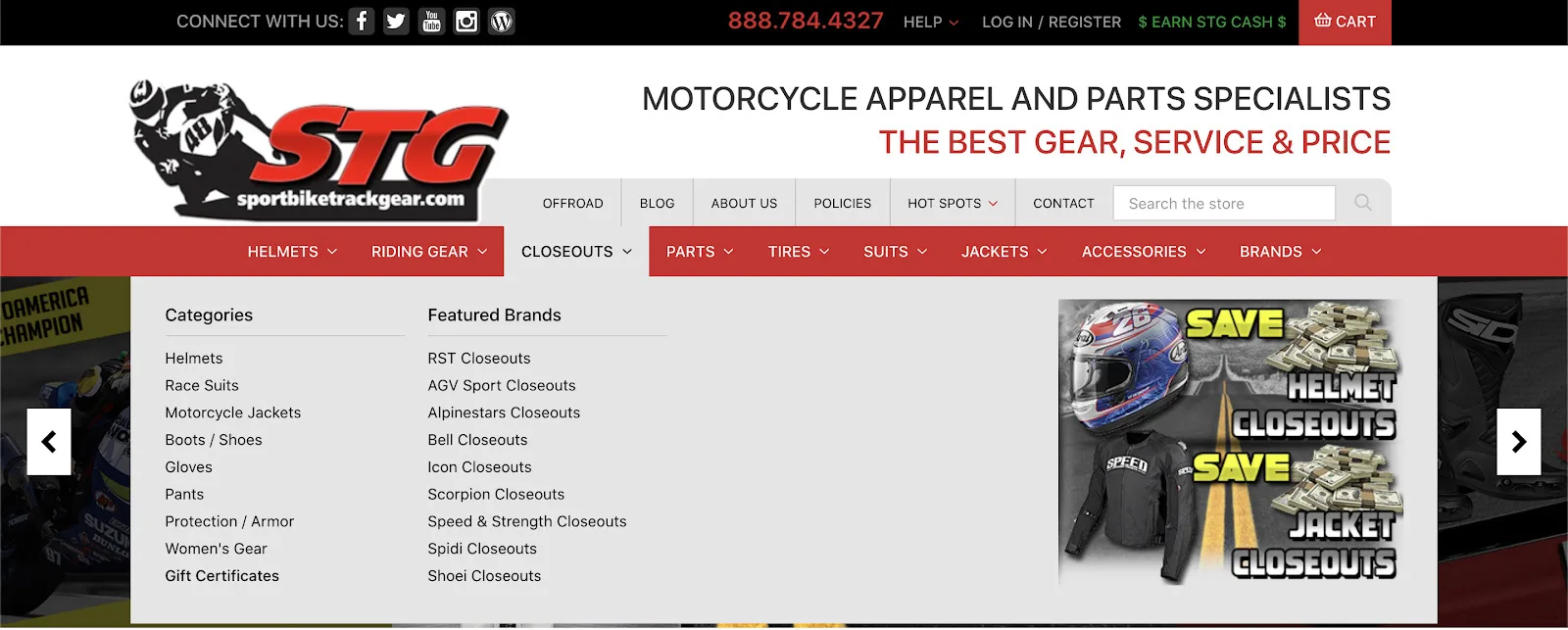
In the above example from Sportbike Track Gear, recommendations are presented in the category pages alongside savings. Though they are not fully personalized, they still remain relevant to the visitor.
Product recommendations can work this way by being bundled with a discount or promotion. Offers like these incentivize visitors to take a closer look, and because the products are still relevant to their interests, they remain likely to engage.
2. Product page.
Ecommerce product pages are arguably the most important pages in your store on which to display personalized product recommendations.
When visitors land on a product page, their purchase intent gets higher. Offering alternative and relevant products whilst they browse can see them potentially purchase more than just the original product, increasing their cart size and driving more revenue.
The below example is a fairly standard template you can personalize. Most product pages will have a “you might also like” or “frequently bought together” section. As this is an important touchpoint in the user journey you need to make sure you optimize it accordingly. Especially on your best-selling products.
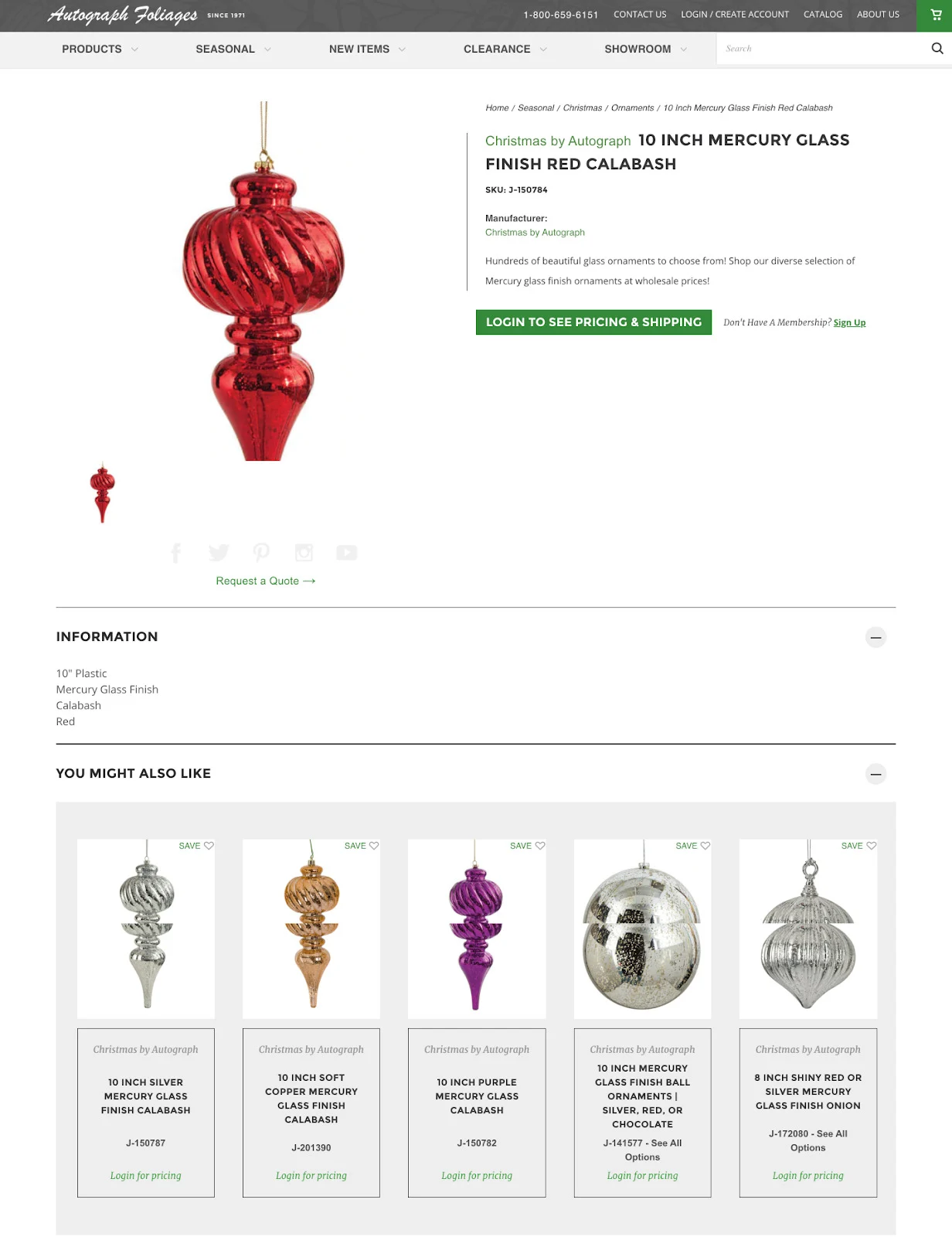
In the example above from Autograph Foliages, the homeware retailer displays recommendations that the visitor is likely to be interested in based on their browsing history. The same product is displayed in different colors, offering users other convenient options to choose from in addition to similar products.
3. Shopping cart.
The cart page is the last chance to offer your customers additional items that can complete their purchase. Personalized product recommendations here can serve as reminders for purchasing opportunities consumers may have overlooked – just like the racks of magazines and gum at the cashier in the grocery store.
But be warned, these come with a risk – the last thing you want to do when your customer is so close to the finish line (checking out) is to distract them and accidentally pull them higher up the funnel. This functionality should be fairly common across all ecommerce platforms, just make sure you choose a specific product, or products, that are related to the users basket.
Eyewear brand MOSCOT balances this well. On the cart page, clip-ons are recommended as an upsell on the pair of glasses that the visitor has added. However, the only clickable CTA is ‘ADD NOW!’, so the visitor isn’t tempted to go exploring other pages:
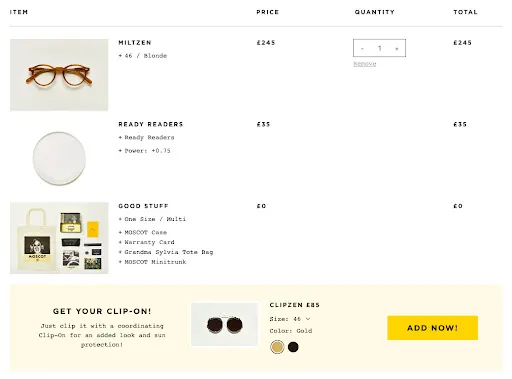
At this stage there is always the chance the user will abandon the checkout for various reasons. But with product personalization you should now have a fairly high AOV basket with the right products in which you can potentially retarget with email campaigns.
3 Examples of Personalized Product Recommendations
Personalized product recommendations can be implemented across any site, to any audience. Let’s have a look at some of the best examples:
1. Bliss.
Beauty retailer Bliss offers product recommendations based upon a problem-solving assessment of the specific visitor.

For example, by users clicking on a moisturizer specific to dry skin, Bliss’ product recommendation algorithm suggests other moisturizing products specific to skin issues.
The title of their recommendations is particularly effective as it suggests that users of the original moisturizing product will benefit greatly from pairing it with one of the suggested items.
This creates an illusion of a useful bundle and encourages the user to treat themselves. These bundles pull on a user’s intrigue to fix their skin issues once and for all.
The placement of the product recommendations is also particularly noteworthy, as it is placed just above the reviews section. This means that visitors looking for a better understanding of the product and its benefits can’t escape the offer of other, perfect additions.
2. Cutter and Buck.
In this example from Cutter and Buck, recommendations are made for products similar to the visitor’s interest. In this instance, it’s a sports team and they also ensure those recommendations form part of a bundle.
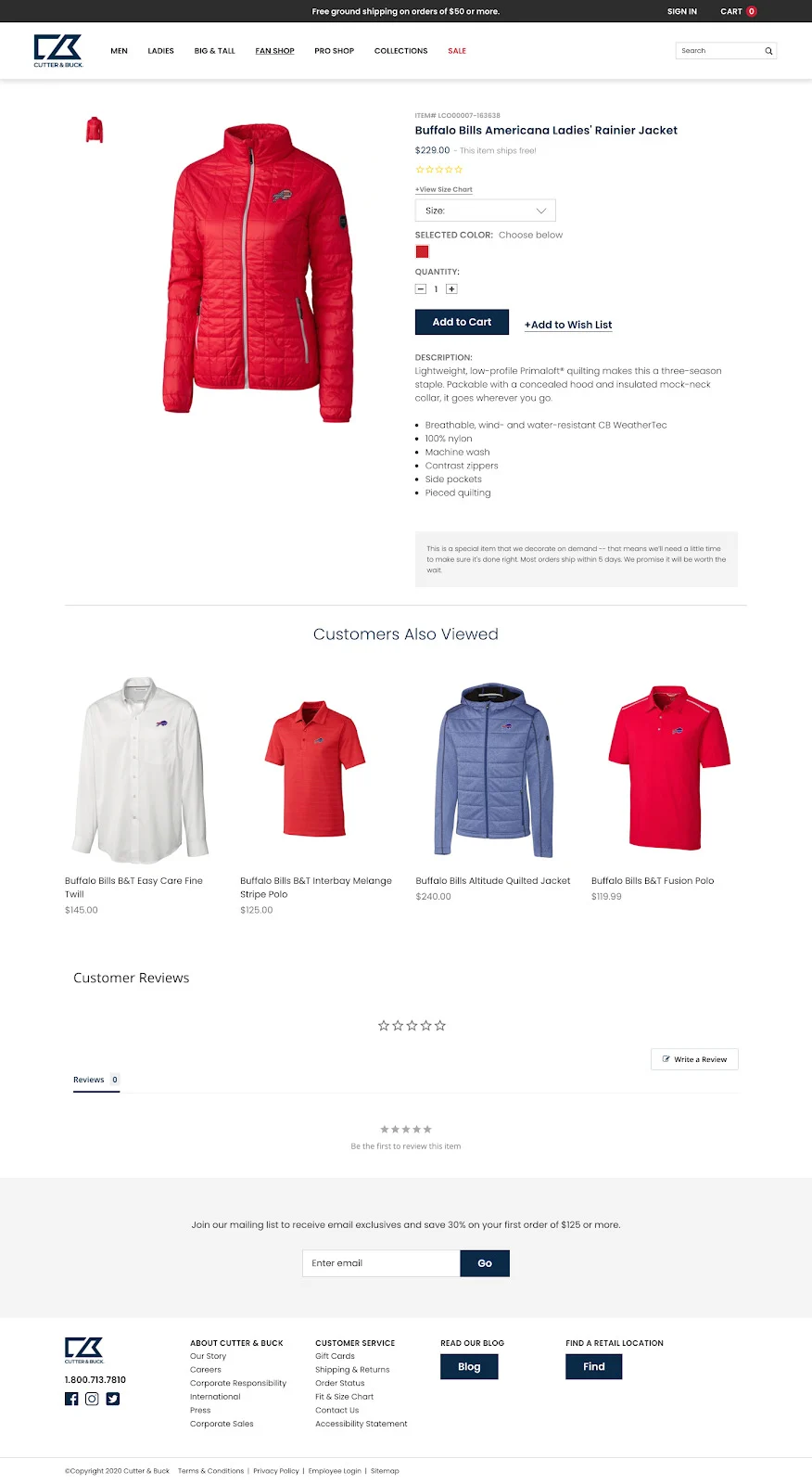
For example, an algorithm detects that whilst you may want to show your love for your sports team on your outerwear, you may also want to show it when you take the jacket off. Lighter products such as t-shirts and a full-length shirt are therefore offered in order to all but build an outfit.
This recommendation is the virtual equivalent of the real-life associate example we mentioned at the beginning of the article. It’s effective because sports team supporters can build their entire outfit, within their team’s colors, without even leaving a single product page.
3. Tommie Copper.
Health and wellness retailer Tommie Copper perfectly deploys relevant, personalized recommendations on its product page in the below example.

Customers are presented with two menus for personalized products based on their initial browsing. By perusing through the women’s section, and then selecting a sock that includes compression technology, the visitor is greeted firstly with an additional three different types of socks. These are labeled as ‘Recently viewed’.
All the socks recommended here feature compression technology, which is important as a visitor choosing a compression item is displaying a clear interest in the benefits of the product. The long, medium, and short designs remain relevant because they contain the important compression element.
Below these designs, an additional menu is displayed. Again, all the products relate to compression items, either for the back, legs, or midriff. At first glance, these may seem unrelated. However, considering injuries or weaknesses to the ankle have been shown to display knock-on effects to both the lower back and midriff through uneven walking gaits, these recommendations are more personalized than first expected.
The website’s algorithm has therefore detected that someone browsing compression items for their feet may need further items to support other areas of their body potentially at risk of developing knock-on effects.
Further, initial user interaction with the women’s section of the site lets the algorithm know to only display products specific to a woman.
Wrapping Up
As the number of online shoppers continues to grow and the industry continues to flourish, personalization should become a top priority for all ecommerce stores.
Whereas before personalization used to be limited to email marketing sequences or chatbots, now it starts from the very moment your visitor arrives on your site.
We’ve seen how personalization can retain and convert customers, which is why personalized product recommendations are a vital addition to any store.
Start with your website data. Analyze and evaluate what the trends are telling you, and which groups of customers want to see what. Once you’ve got this information you can begin to deploy strategies across your site, making sure to test and evaluate them continually.
As marketers you’ll always be looking for ways to drive performance. Product personalization, with a bit of automation or optimization will help you do just that. If done successfully, your website will edge ahead of your competitors, increase average order values, and ultimately drive more revenue.

Justina Bakutyte is the Growth Marketing Manager at Yieldify, helping eCommerce companies quickly and easily grow their leads, conversions, and revenue by creating personalized customer journeys.


